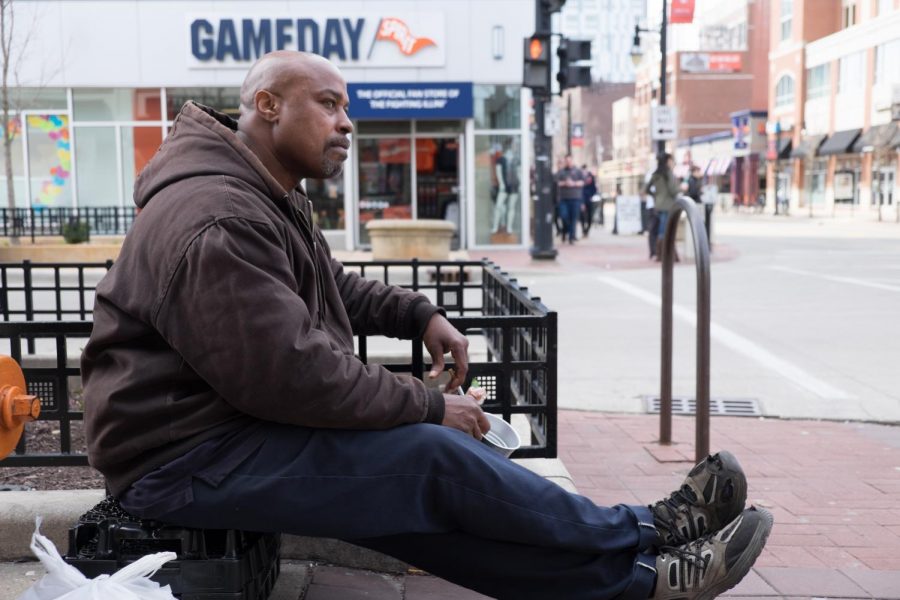Responsibility calls to community members who aid homeless
Kevin Love asks for spare change on the corner of Sixth and Green Streets on April 28, 2018.
Jan 28, 2020
Rob Dalhaus feels that as a society, there is a responsibility that comes to providing support for the homeless. As the executive director of CU at Home, a homeless shelter located at 70 E. Washington St., Champaign, Dalhaus has been a champion of homeless life issues since 2016.
In his experience, Dalhaus has found helping the homeless can often be more about us than them.
“As a society, we have these barriers that we put up as it relates to (the homeless),” Dalhaus said. “So you just walk by them and don’t even give them the time of day or you throw some money at them so that you feel good.”
From his work with the displaced population in the community, Dalhaus has learned the sense of connection is more important than getting some money for many of them.
In Illinois, homelessness has been in a steady decline since 2015. The trend has been similar in Champaign County. Since 2014, there has been an 18% decrease in the homeless population. While there has been a downward trend, the Champaign County Regional Planning Commission maintains it is still a serious and complex issue.
Get The Daily Illini in your inbox!
For homeless shelters, like CU at Home, it gets complicated because there are various stages of homelessness, Dalhaus said. To provide support to everyone, he said they have developed a host of resources for everyone on the “Vulnerability V.” It’s a needs-based classification system that CU at Home uses to estimate the amount of support a homeless individual might need.
The financially stable individuals with independent living conditions are at the top. As we move down, some don’t have a stable income source or are struggling to hold on to their home, Dalhaus said.
Many individuals that come to CU at Home are “On the Verge.” They are living paycheck-to-paycheck and don’t have a strong support system to help them.
However, Dalhaus said, most of the individuals who enlist their help often have no housing of their own. They subsist on welfares and panhandling.
“As you increase stressors, decreased support (and) increase the presence of mental health and substance abuse issues, the person starts to fall down the V,” Dalhaus said. “So it is absolutely imperative in our community to have resources at every level.”
However, if those resources are not available, the person falls down the V faster, he added.
“It just takes a lot of little, little steps,” Dalhaus explains. “Many of our friends in a homeless situation have been on the streets for a long time and that’s a tough cycle to break.”
For those homeless individuals at the bottom of the V, the shelter also provides transitional housing along with transportation services.
And to reach and support all of them, CU at Home has a daytime drop-in center where homeless people often gather to build relationships and form a community.
“We’re actually able to help and house individuals who are trying to move their way up the V,” Dalhaus said.
They also educate the privileged members of the community to raise awareness about the issues the homeless face and how to best help them.
Dalhaus has been with CU at Home for four years now, and he has come to hate the word homeless — the “H-word.” He dislikes the negative connotation it carries.
“I like to view them as friends,” he said. “So we call them friends on the streets.”
For him, the change in terminology can be a big step toward changing how his friends on the street are perceived by society.






